I just Googled for images of L deterrimus and got this http://www.google.co...biw=789&bih=395
They all look pretty different to me and yet claim to be the same thing. How does one sort all this out??

This is why you should never trust anyone to ID a mushroom from a photo. There's a lot of variation, and the ability to tell what something is at a glance only comes after you've done the more careful checking and seen a few different specimens. The good news is that most of the distinctions you need to understand are quite unambiguous - for example, whether a mushroom has gills or pores on the underside of the cap (there are almost no very poisonous mushrooms with pores, and lots of good edibles in that category). The way to do it is to compare systematically against a description in a decent field guide - Roger's is the best in my experience. So choose a mature mushroom rather than an emerging buttony one and note the size of your mushroom across the cap and the shape of the cap, the colour, the texture (some mushrooms are slimy, some sticky, some velvety etc) and the habitat in which it is growing - both the species I've been going on about occur under or near spruce or pines. If you look at a Lactarius from above you can usually see a subtle but distinctive pattern of concentric rings - with both species you're after these are likely to be greenish - with deterrimus they might have a winey tinge. Cut a specimen through the stem at the base and note any change of colour, and whether the stem is hollow, solid, tough, spongy etc - Lactarius are likely to be spongy and hollowing near the base and you'll see a ring of colour where you've cut. Some mushrooms (though not these) have distinctive underground features, so you need to dig up a specimen to check. Cut right through the cap and stem from top to bottom so you've got two symmetrical halves, and again note change of colour - in those Google images you'll note that the carrot-coloured line running from above the gills down the stem is quite obvious. Break a bit off the cap and squash some of the gills - Lactarius is on the brittle side and will ooze latex where it's broken, and deterrimus discolours gradually with the deepening winey colour to the point that it looks fairly messy if you've got a few in a basket getting knocked about. Have a sniff! Some mushrooms smell of apricots, aniseed, toasted almonds, flour - although in fairness a lot of them are just mushroomy. Positive ID is a satisfying thing - you get a hunch then the detail chimes in feature by feature and you feel terribly pleased with yourself, even if it's something you can't eat. IDing poisonous ones is reassuring as well.




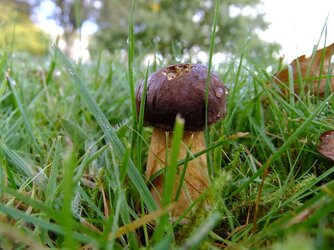
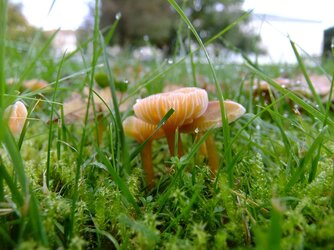
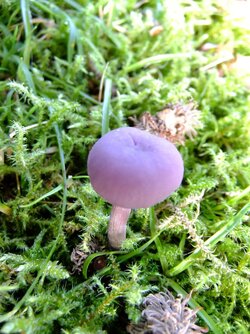
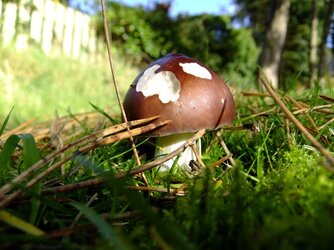
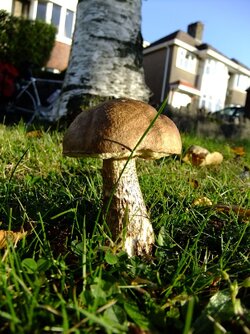
 Of course you'll know this, but not everyone will, it's all b*ll*cks about mushrooms falling neatly into two categories: 'edible' and 'poisonous'. 99% of all the mushrooms out there fall into the third category: 'harmless but worthless'. You wouldn't eat acorns or horse-chestnuts, would you? Nor for that matter, grass? They won't kill you, but you won't want to eat them. Same is true of most mushrooms. Most of them I've never learnt to identify properly, but it doesn't matter because I know they're not worth it.
Of course you'll know this, but not everyone will, it's all b*ll*cks about mushrooms falling neatly into two categories: 'edible' and 'poisonous'. 99% of all the mushrooms out there fall into the third category: 'harmless but worthless'. You wouldn't eat acorns or horse-chestnuts, would you? Nor for that matter, grass? They won't kill you, but you won't want to eat them. Same is true of most mushrooms. Most of them I've never learnt to identify properly, but it doesn't matter because I know they're not worth it.
 ). Plus there are of course some rarer ones...
). Plus there are of course some rarer ones...

